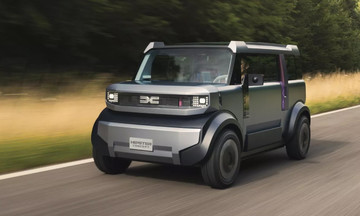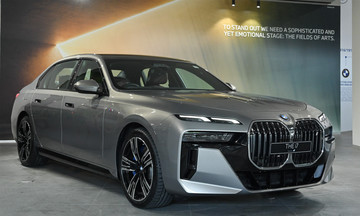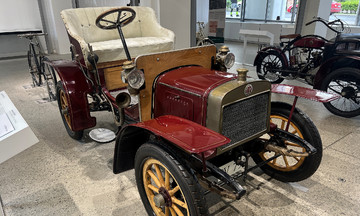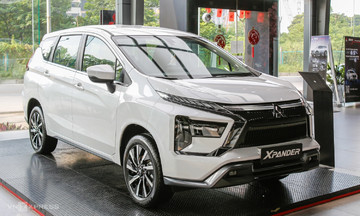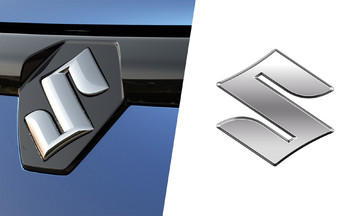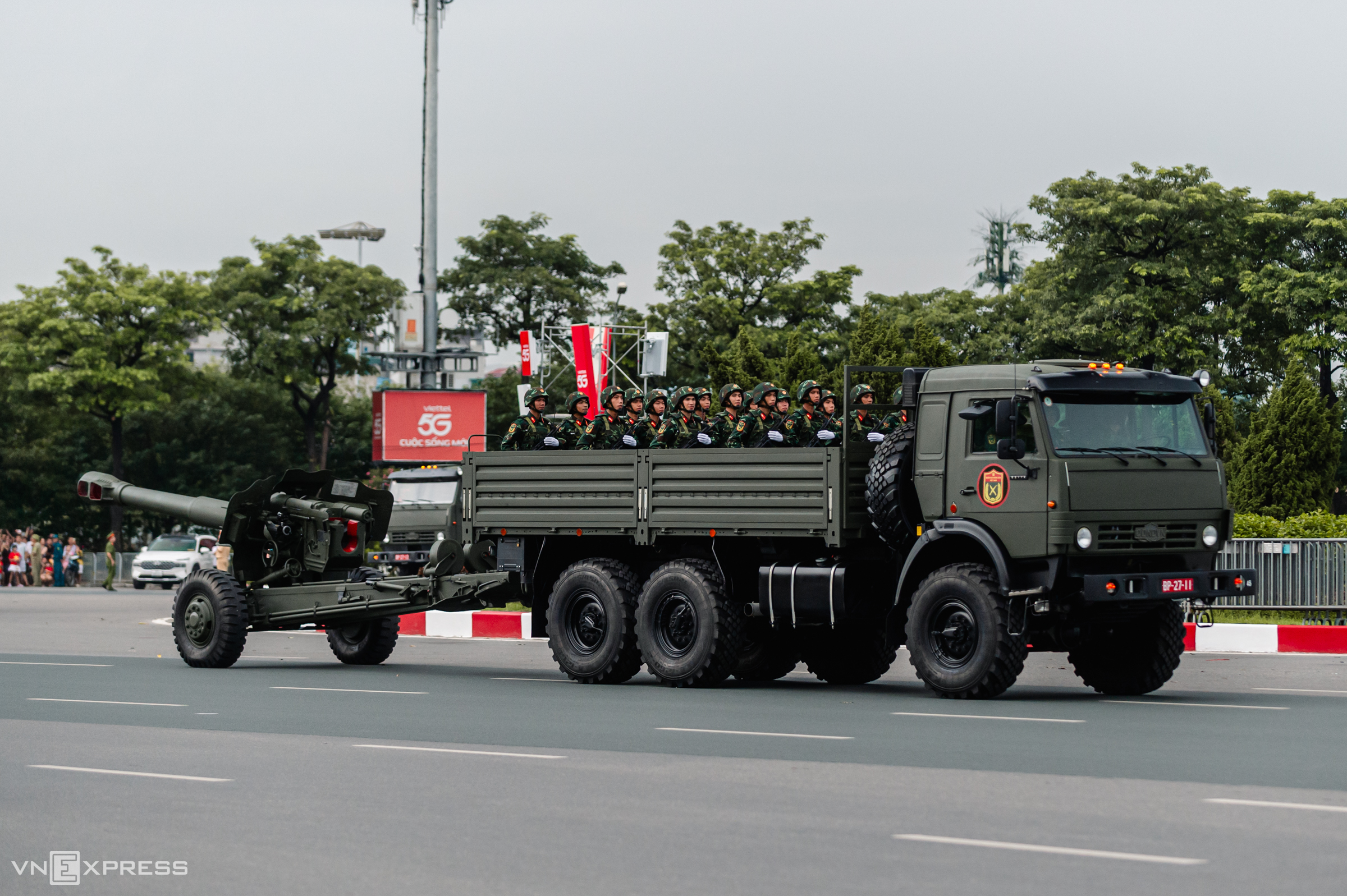 |
The People's Army of Vietnam showcased over 20 types of specialized vehicles and equipment at the parade commemorating the 80th anniversary of the August Revolution and National Day on 2/9. Many of these vehicles are rarely seen on public roads. The vehicles featured in this article were observed during rehearsals and final reviews in late August. Manufacturer specifications may not entirely match the versions used by Vietnam.
KamAZ truck
The KamAZ is a 6-wheel multi-purpose truck manufactured in Russia since 2003. The cabin accommodates three people and a bed. It is equipped with an 8-cylinder, 250-horsepower turbocharged diesel engine and a cold-start system, enabling operation at temperatures as low as -50 degrees Celsius. The truck has a payload capacity of 6,000 kg and can tow trailers or artillery. The cargo bed features modules for attaching various military components, and the cabin can be fitted with additional armor.
Towing behind the KamAZ is the 130-M46 howitzer, a heavy field artillery piece operated by a crew of 8. The M46 has a maximum range of 38 km and a firing rate of up to 8 rounds per minute. It can fire various types of ammunition, including high-explosive fragmentation, armor-piercing, smoke, illumination, and extended-range rounds.
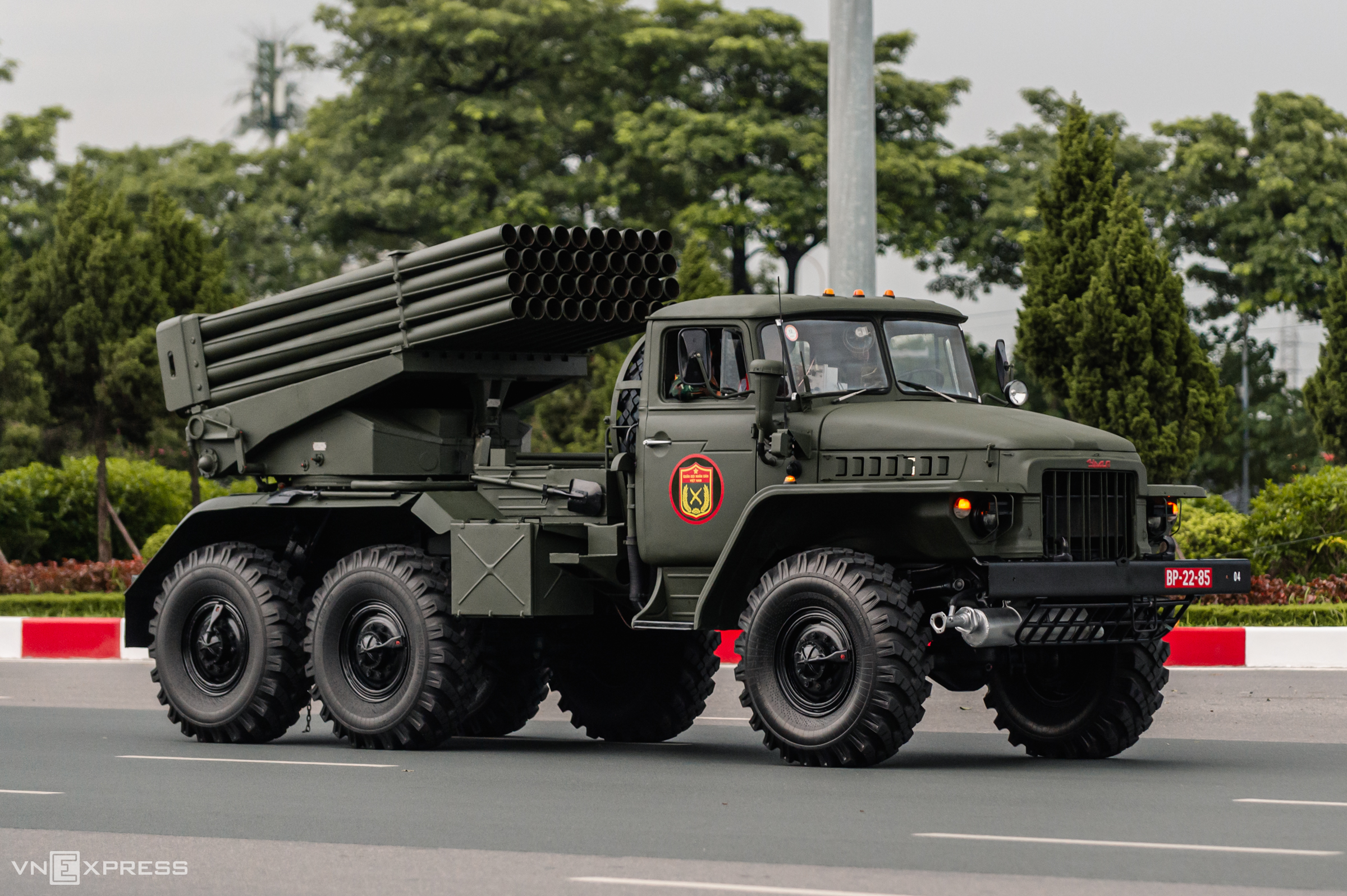 |
BM-21 Grad and M-21OF rockets
The BM-21 Grad multiple rocket launcher is considered a formidable weapon in the Vietnamese artillery arsenal. BM (Boyevaya Mashina) means "combat vehicle." It was designed in the Soviet Union between 1964 and 1983. The rocket system is mounted on a Ural-375D truck, powered by a 7-liter, water-cooled, V8 ZIL-375Ya gasoline engine generating 180 horsepower. It features a 5-speed manual transmission and a 2-speed transfer case. The vehicle has a top speed of 75 km/h, an operational range of 750 km, and can ford water up to 1.5 m deep.
The rear mounts a 40-tube launcher for 122 mm rockets, specifically the M-21OF. It can fire all 40 rockets in just 20 seconds, with a range of 20 to 40 km depending on the ammunition type.
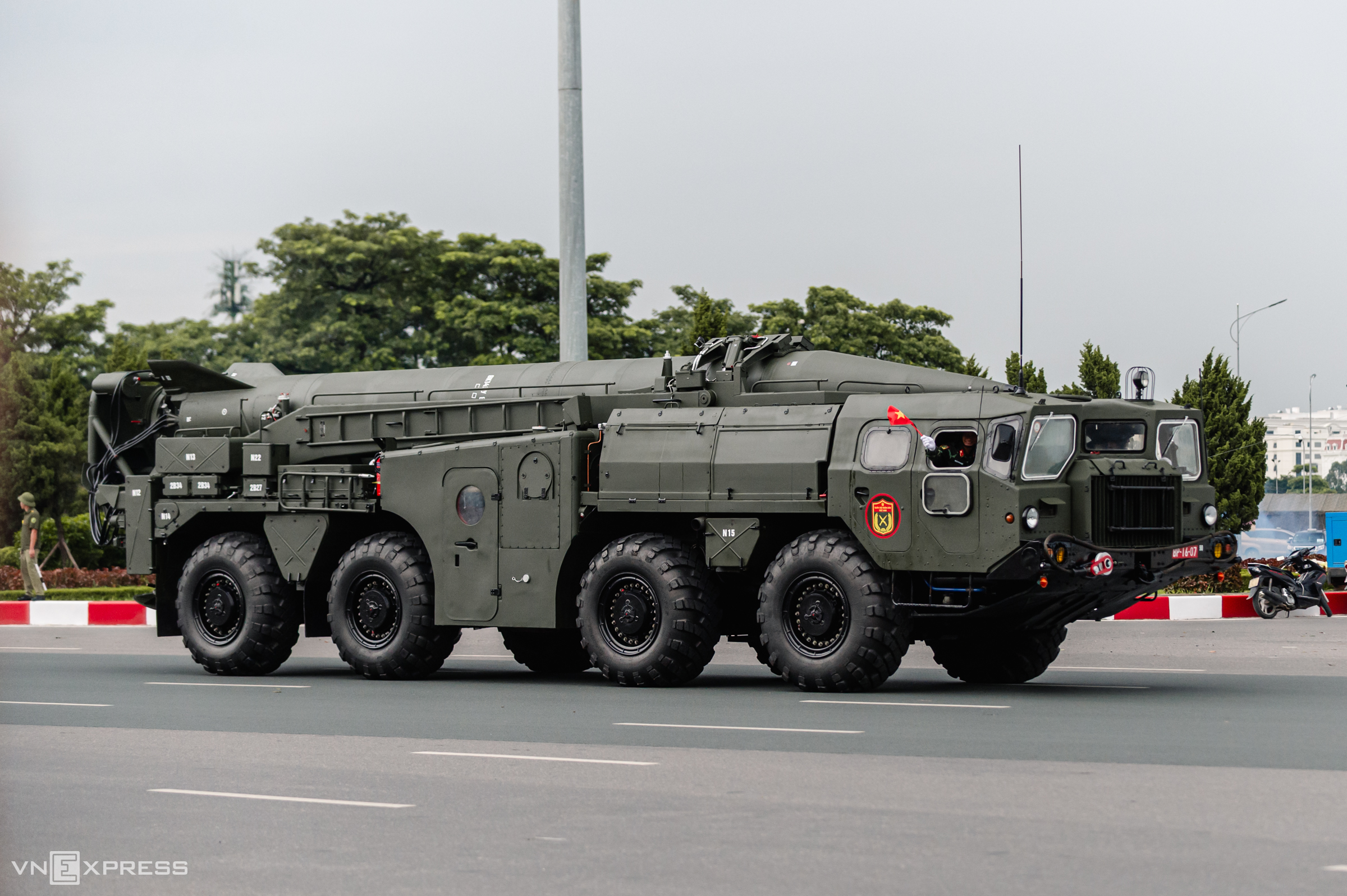 |
Scud B missile system
The Scud missile system was developed by the Soviet Union during the Cold War. The Scud B variant has been in production since 1964. Vietnam acquired the missile system from the Soviet Union in 1981 and is considered the only Southeast Asian nation to possess this ballistic missile. The missile is mounted on a MAZ-543 launcher designed and developed by MAZ (now in Belarus). The vehicle is powered by a 38.9-liter D12A-525 diesel engine producing 525 horsepower and has a top speed of 60 km/h.
The Scud B missile is placed on the 9P117 Uragan launcher and is intended for long-range strategic attacks. It carries an R-17E warhead containing 1 ton of TNT, creating a crater 1.5-4 m deep and 12 m wide upon impact at a speed of 1.4 km/s. The missile has a range of approximately 300 km with a circular error probable of about 450 m. Each combat team requires 4 personnel to operate: a driver, a gunner, and a technical team.
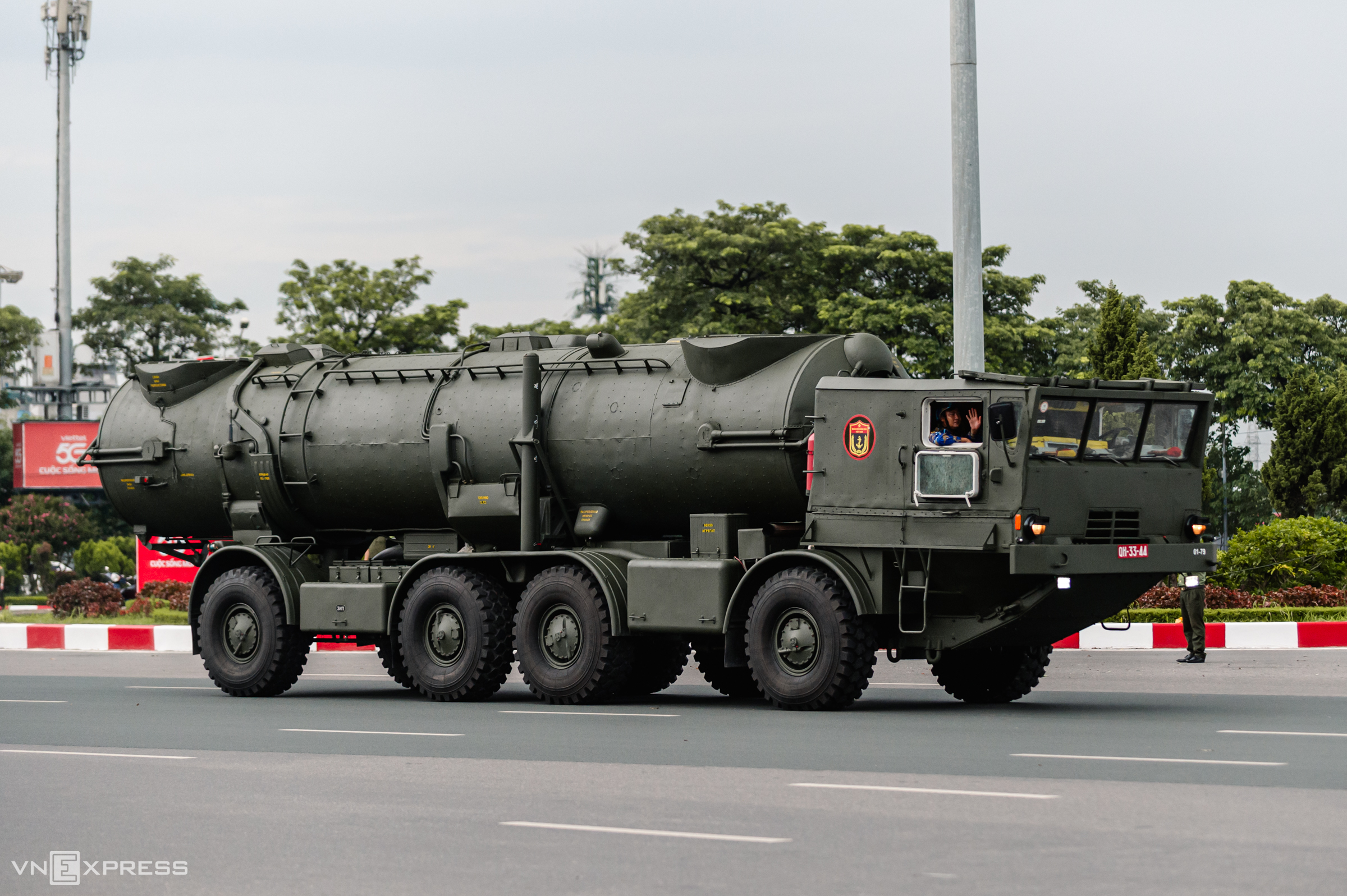 |
Redut-M missile system (with 4R45 Skala radar control vehicle)
The Redut-M missile system was developed by the Soviet Union in the 1950s and 1960s and entered service in the 1960s. A typical system consists of four vehicles: a 4R45 Skala radar control vehicle and three missile carriers. The missile system is mounted on a BAZ-135MB 8x8 vehicle, powered by a 14.87-liter, V8, turbocharged YaMZ-238N diesel engine producing 300 horsepower, coupled with an 8-speed manual transmission. The engine also features a starting preheater, a combined lubrication system, and two air and oil filters. The cabin seats four but can accommodate up to 6 people if necessary. The vehicle has a top speed of 65 km/h, an average fuel consumption of 90 liters/100 km, and a maximum range of 818 km.
Mounted on the chassis is the ZIL-35V launcher for coastal defense. It utilizes the P-35B anti-ship cruise missile with a range of 270-300 km and a speed of up to Mach 1.5. The P-35B carries a warhead containing 800-1,000 kg of TNT, capable of sinking warships over 7,000 tons, including aircraft carriers. Deployment time is about 30 minutes with a crew of 5.
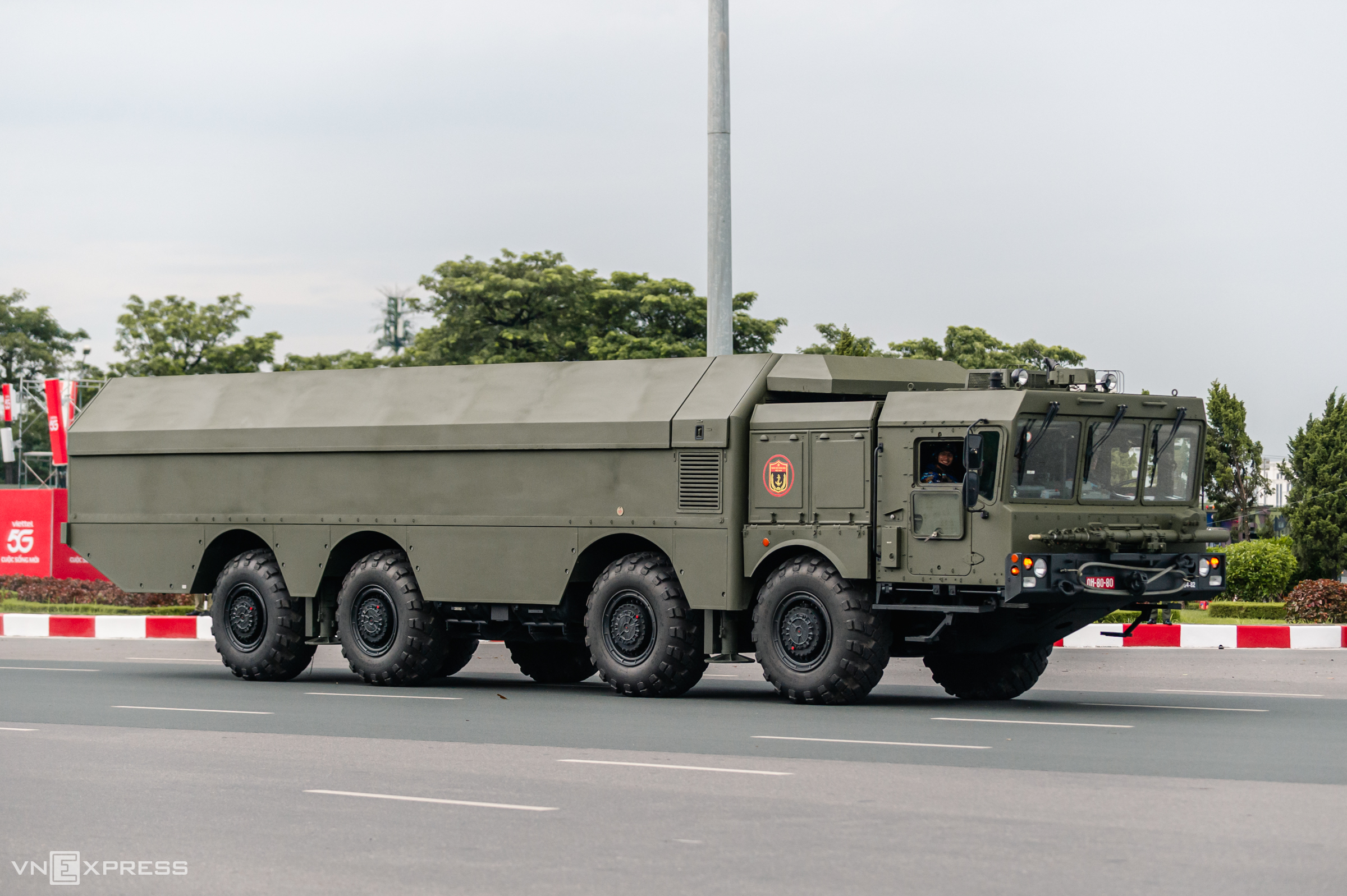 |
K300-P Bastion-P missile system
The Bastion-P mobile coastal defense missile system was developed by Russia and the Belarusian company Tekhnosoyuzproekt. Production began in 2010, and it has been in service since 2015. The missile is mounted on the MZKT-7930 Astrolog truck, designed in the 1990s by the Belarusian manufacturer MZKT and officially adopted in 2000. The truck is powered by a 500-horsepower YAMZ-846 turbocharged diesel engine and has a top speed of 70 km/h.
The missile system comprises 1-2 command vehicles based on the KamAZ-43101 6x6 chassis, a support vehicle, four MZKT-7930 launchers each carrying 2 missiles and crewed by 3 personnel, and 4 reload vehicles. The Bastion-P system requires only 5 minutes to prepare for combat and can operate continuously for 3-5 days. It uses the P-800 Oniks missile, carrying a warhead containing 200-250 kg of explosives. The missile's range varies from 120-300 km depending on the flight profile.
 |
MS-20S bridge-layer vehicle
Also part of the Engineering Corps, the MS-20S bridge-layer was developed in Poland and custom-ordered for Vietnam in 2021. The bridge system is mounted on a Jelcz C662D.43-M 6x6 vehicle, powered by a diesel engine with permanent 6-wheel drive, providing excellent off-road capability.
The bridge system features a PM-20 bridge span with a hydraulic launching mechanism. The span is 23 m long and 4 m wide, capable of bridging gaps up to 20 m. It has a load capacity of up to 72.6 tons, suitable for transporting oversized and heavy vehicles across challenging terrain.
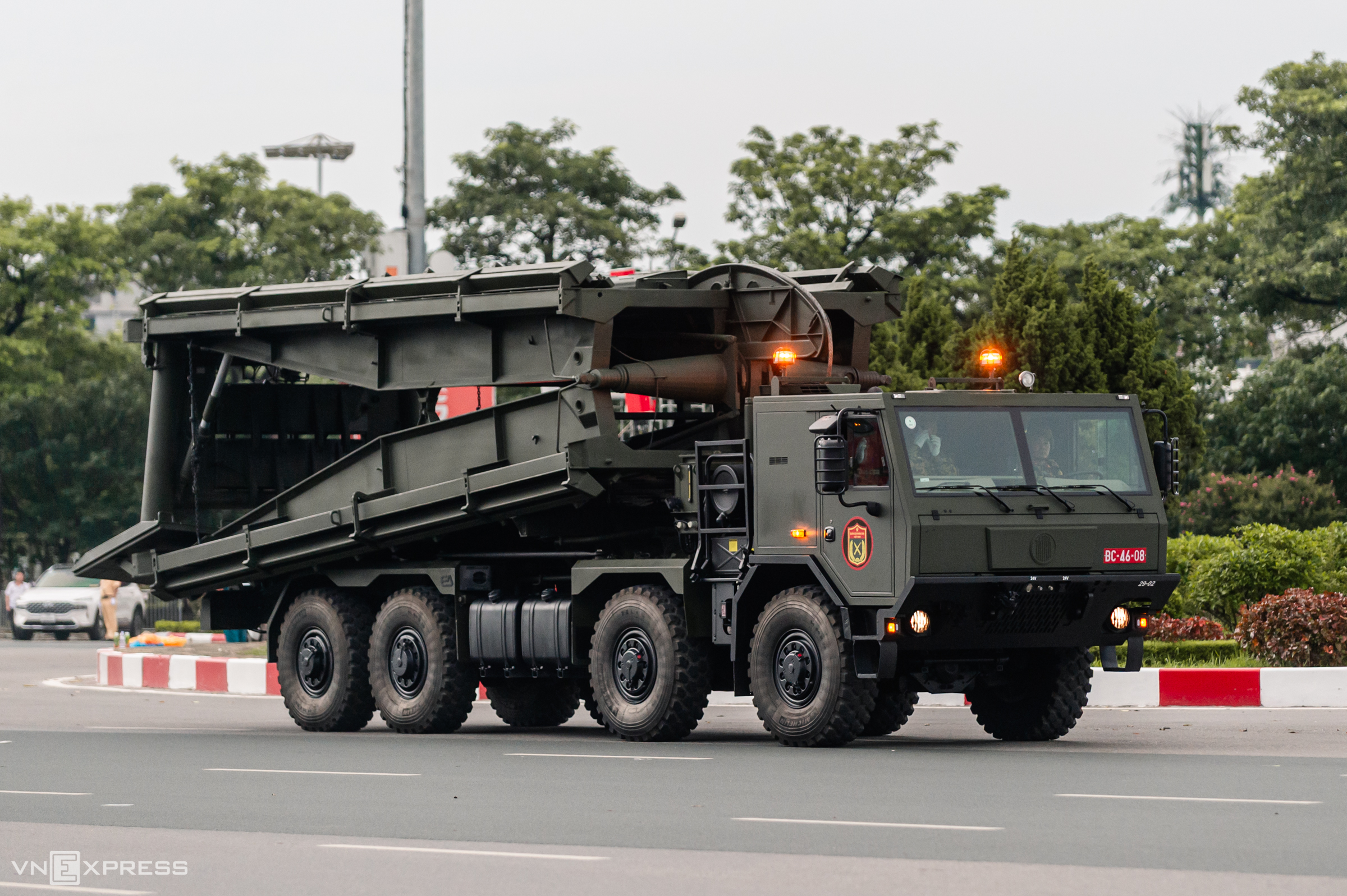 |
AM-50S bridge-layer vehicle
The AM-50S bridge-layer, also part of the Engineering Corps, is a heavy bridge system developed for the Czechoslovakian army in the late 1960s by Szech. The system is mounted on a Szech Tatra 815 8x8 vehicle designed for extreme terrain. Its main structure is a central load-bearing tube, with all other components mounted on this assembly. The cabin is armored and protected against chemical, biological, and radiological agents.
The AM-50S bridge system has a span length of 13.5 m, a depth of 5.56 m, and a load capacity of up to 46.5 tons, allowing tanks and self-propelled artillery to cross safely. The AM-50S requires a crew of 8 and can be linked with 4 spans to create a 54 m steel roadway.
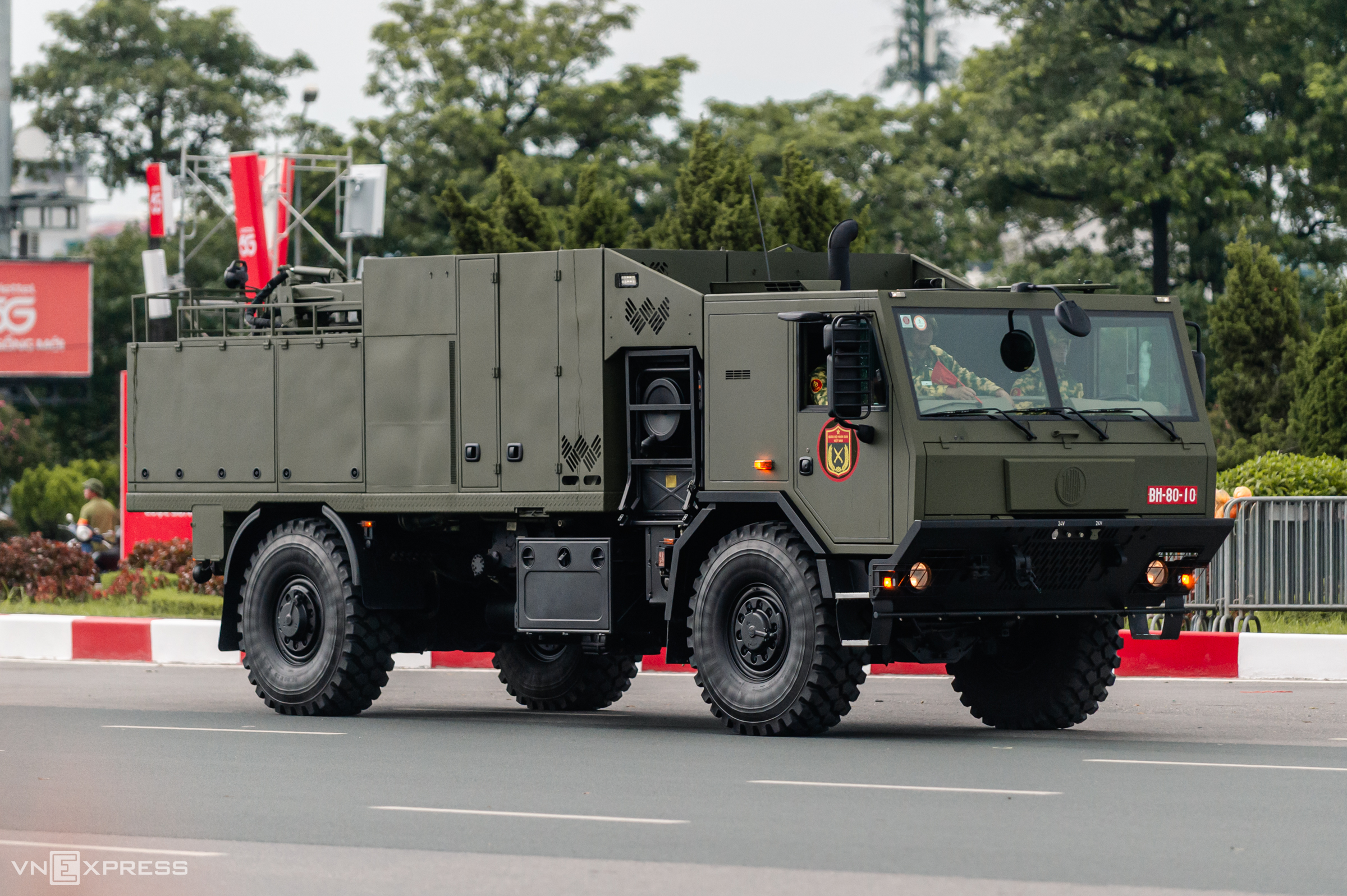 |
Excalibur Army TMVA Decon-17EX
The Excalibur Army TMVA Decon-17EX is a heavy decontamination vehicle developed by the Czech Republic, specifically designed for chemical, biological, radiological, and nuclear (CBRN) tasks. Built on a TATRA all-terrain military chassis, the vehicle offers high mobility and can be deployed in various challenging environments.
A key feature is its lifting boom, which extends up to 12 m vertically and 7 m horizontally, enabling decontamination of not only personnel, vehicles, and equipment but also aircraft, buildings, and large objects. The vehicle is equipped with three tanks: two 700-liter tanks and one 1,000-liter tank that can hold oil or cleaning agents, and a high-pressure washing system. With its high mobility, a top speed of 115 km/h, and an operating range of 1,000 km, the Decon-17EX can operate independently or establish decontamination stations for multiple units simultaneously.
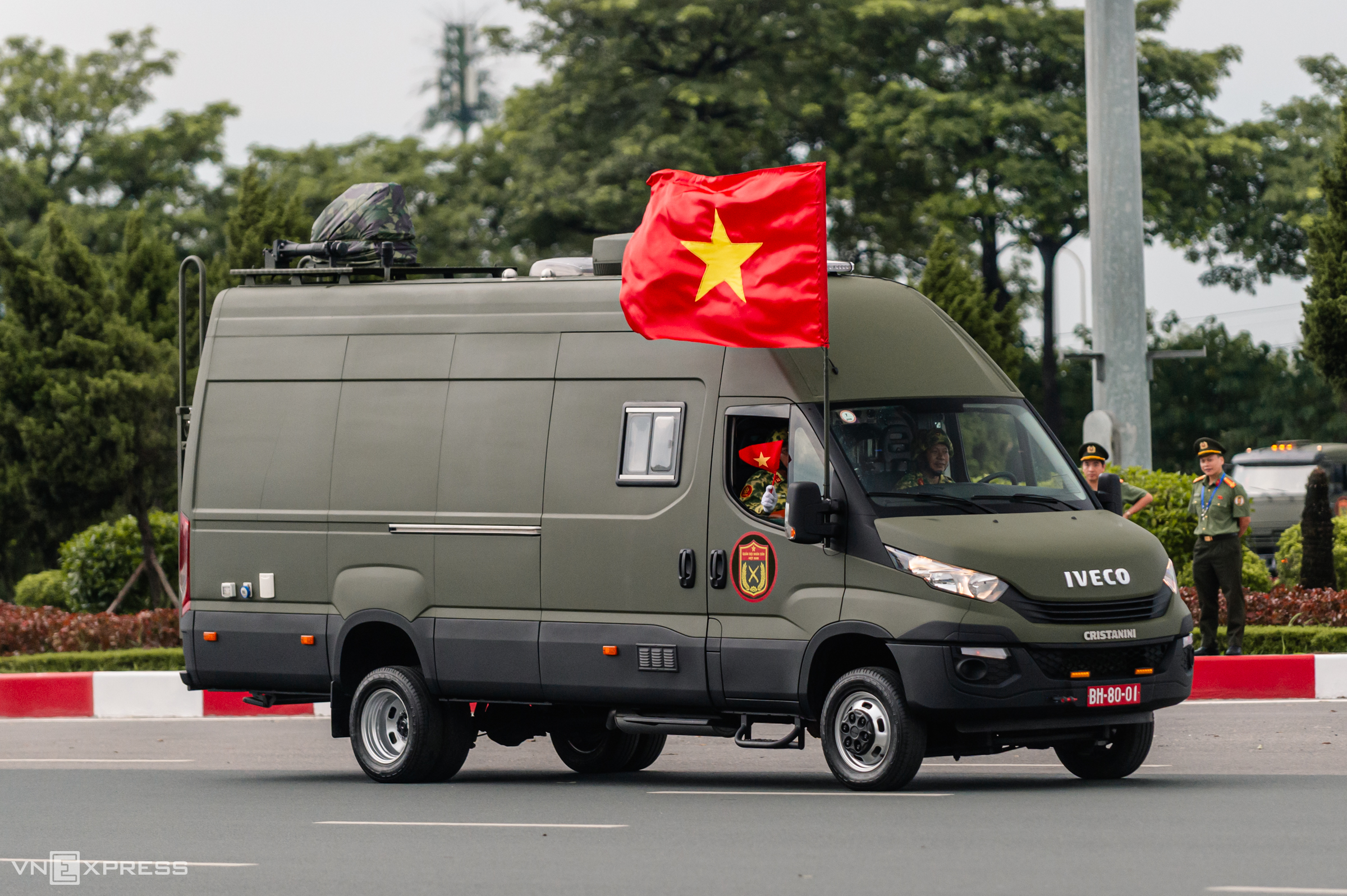 |
Iveco Daily
The Iveco Daily Cristanini is a military variant of the Iveco Daily van designed for CBRN tasks. Its compact size makes it suitable as a mobile command vehicle, communication station, or mobile laboratory. The vehicle's interior houses telecommunications equipment, analytical instruments, and a small-scale decontamination system, enabling on-site monitoring and incident response. The roof can be equipped with antennas, radar, or satellite communication units to maintain connectivity in complex environments.
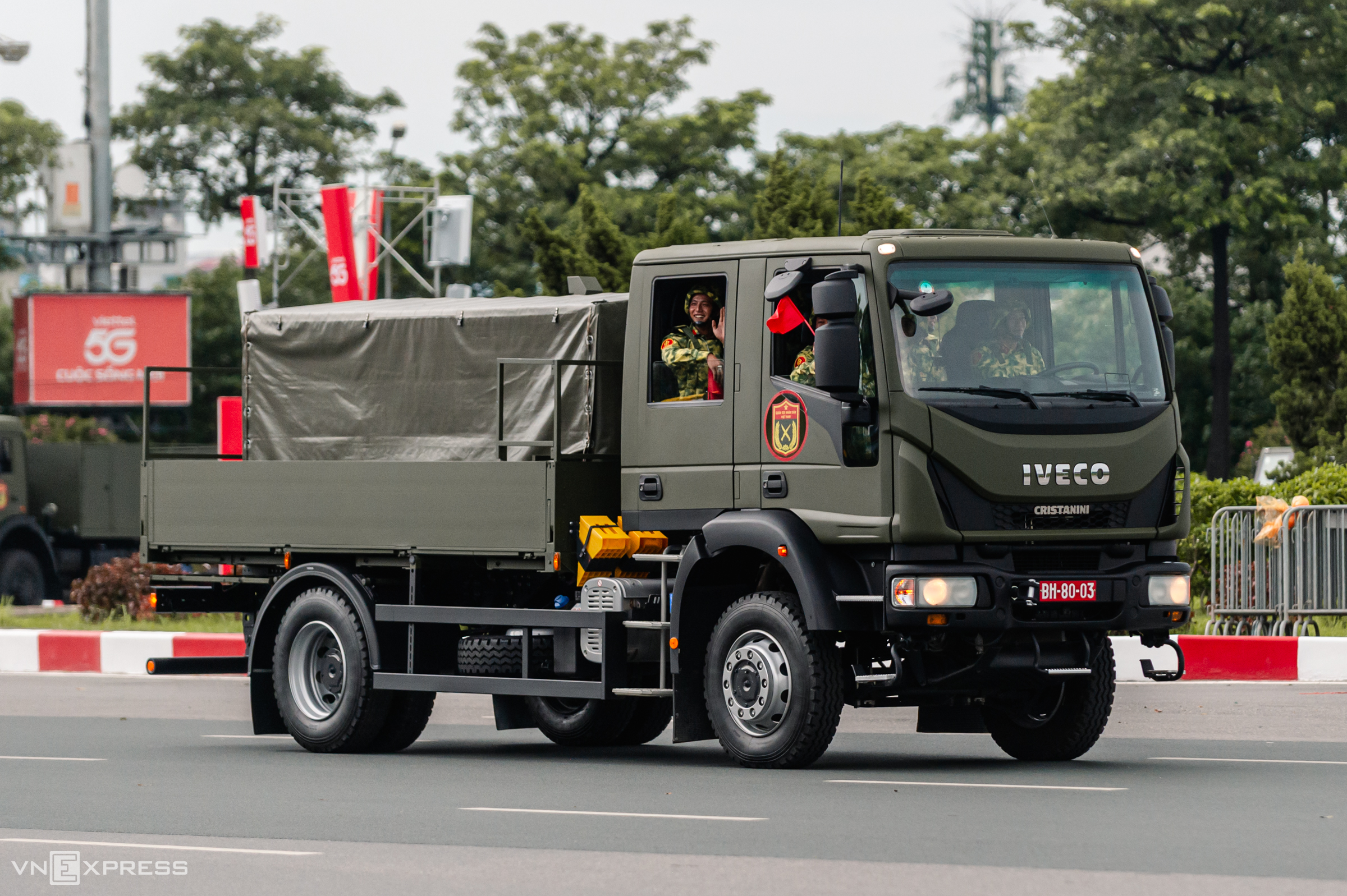 |
Iveco Eurocargo 110-220 Cristanini
The Iveco Eurocargo 110-220 is a specialized vehicle designed for CBRN tasks. Developed on the Iveco Eurocargo chassis (Italy), it offers high mobility and reliable operation across various terrains. Cristanini (Italy) integrated a modern decontamination system, capable of high-pressure washing and decontaminating military equipment, vehicles, and cleaning areas after exposure to hazardous materials. Beyond military operations, the Cristanini Iveco CBRN vehicle is also used in civilian applications, such as responding to chemical accidents, environmental incidents, or nuclear disasters.
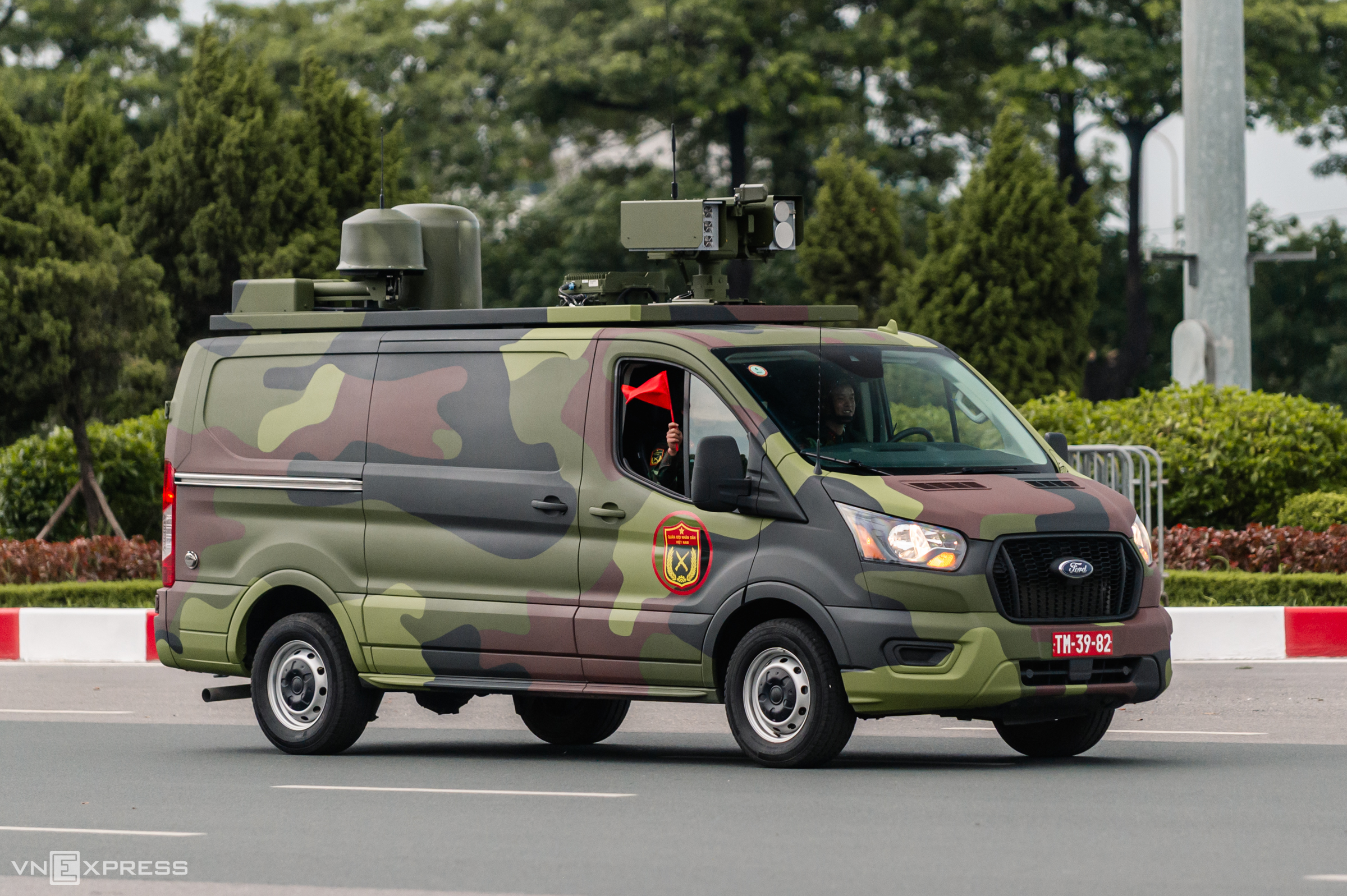 |
Ford Transit 150 Cargo Van
Part of the electronic warfare fleet, the Ford Transit 150 Cargo Van is imported from the US. This standard, low-roof version is equipped with a 3.5-liter V6 engine generating 275 horsepower and a 10-speed automatic transmission with overdrive. In military service, the roof is fitted with a retractable rear radar system for reconnaissance and jamming unmanned aerial vehicles.
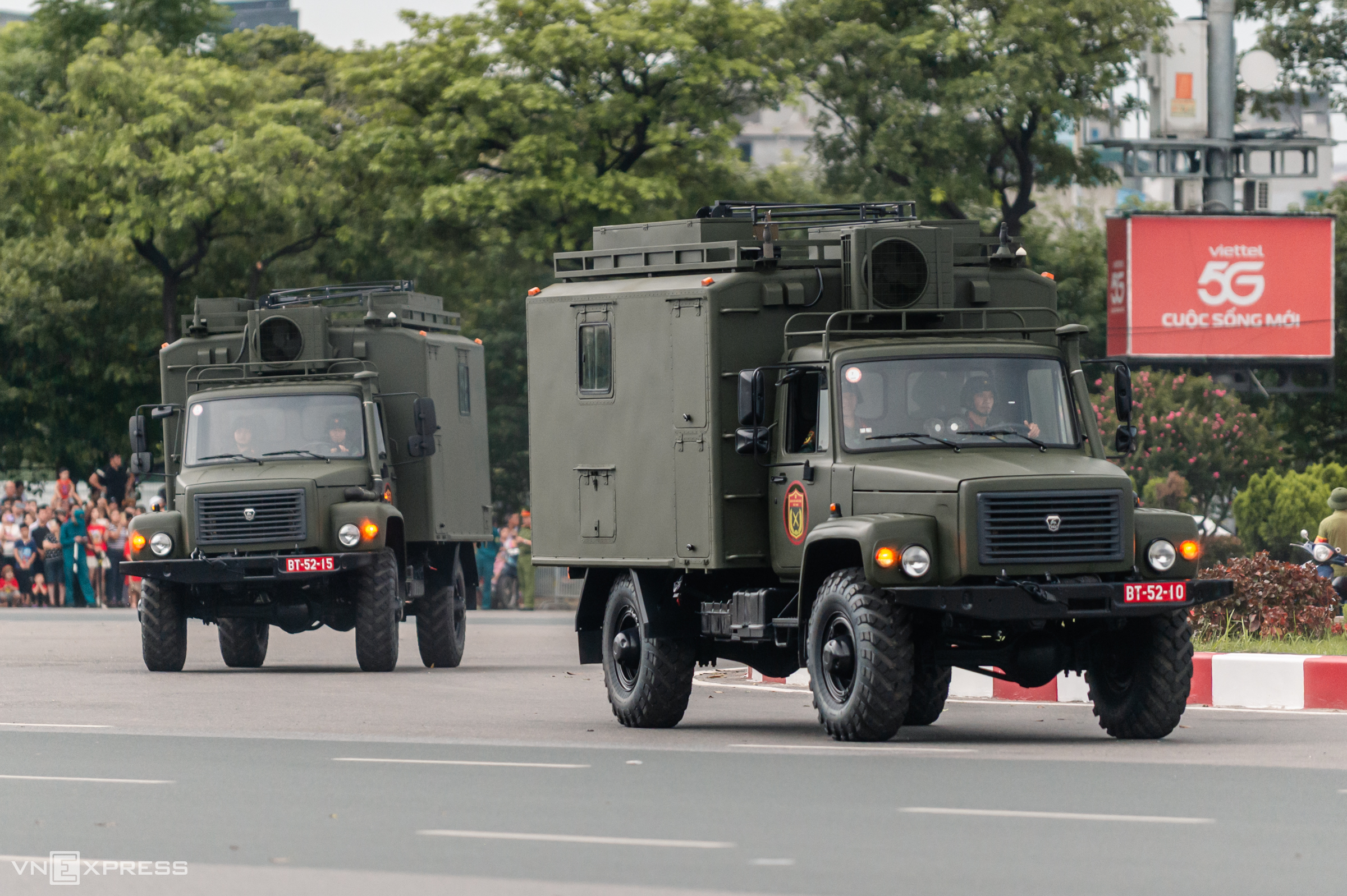 |
GAZ-3308 Sadko
The GAZ-3308 Sadko is a 2.5-ton, four-wheel drive cargo truck manufactured in Russia from 1997 to 2020. It's equipped with a 4.67-liter, V8, ZMZ-5231.10 carbureted engine producing 130 horsepower, paired with a 5-speed manual transmission. In the parade, the GAZ-3308 was part of the strategic and operational mobile communications unit, ensuring communication during national political events.
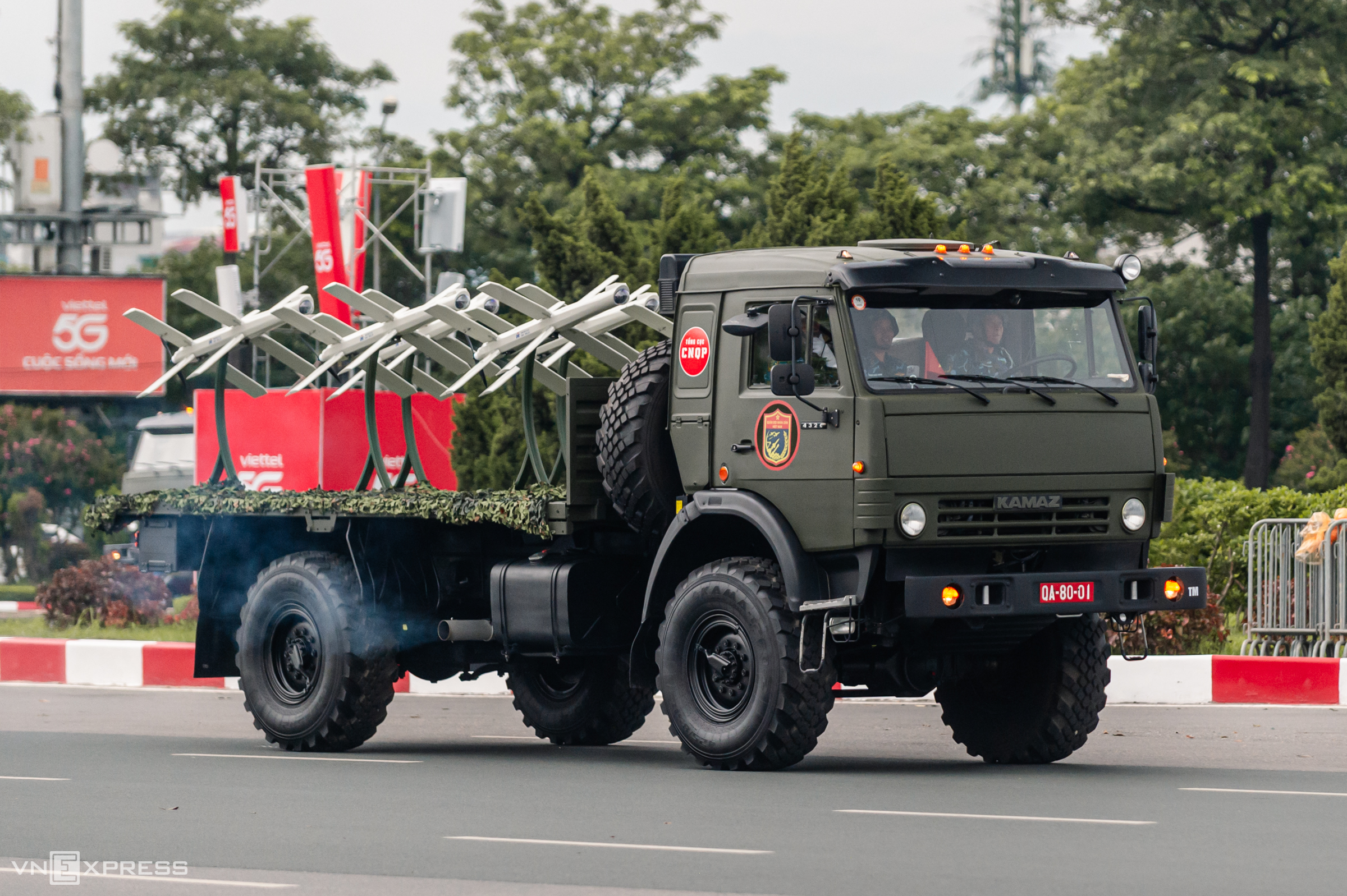 |
KamAZ-4326
Development of the KamAZ-4326 began in the 1980s, but due to high demand at the factory, mass production started in 1995 after the collapse of the Soviet Union. The vehicle is equipped with a 10.8-liter V8 diesel engine producing 240 horsepower and has a top speed of 100 km/h.
It has two fuel tanks, each with a capacity of 210 liters, providing a range of 1,100 km. The vehicle boasts good off-road capabilities, can ford water up to 1.5 m deep, and benefits from readily available spare parts and easy maintenance. As part of the air defense missile system, the KamAZ-4326 transports tactical UAVs and suicide drones manufactured by the Vietnam National Defense Industry General Department for attacking armored targets or reconnaissance and rescue missions.
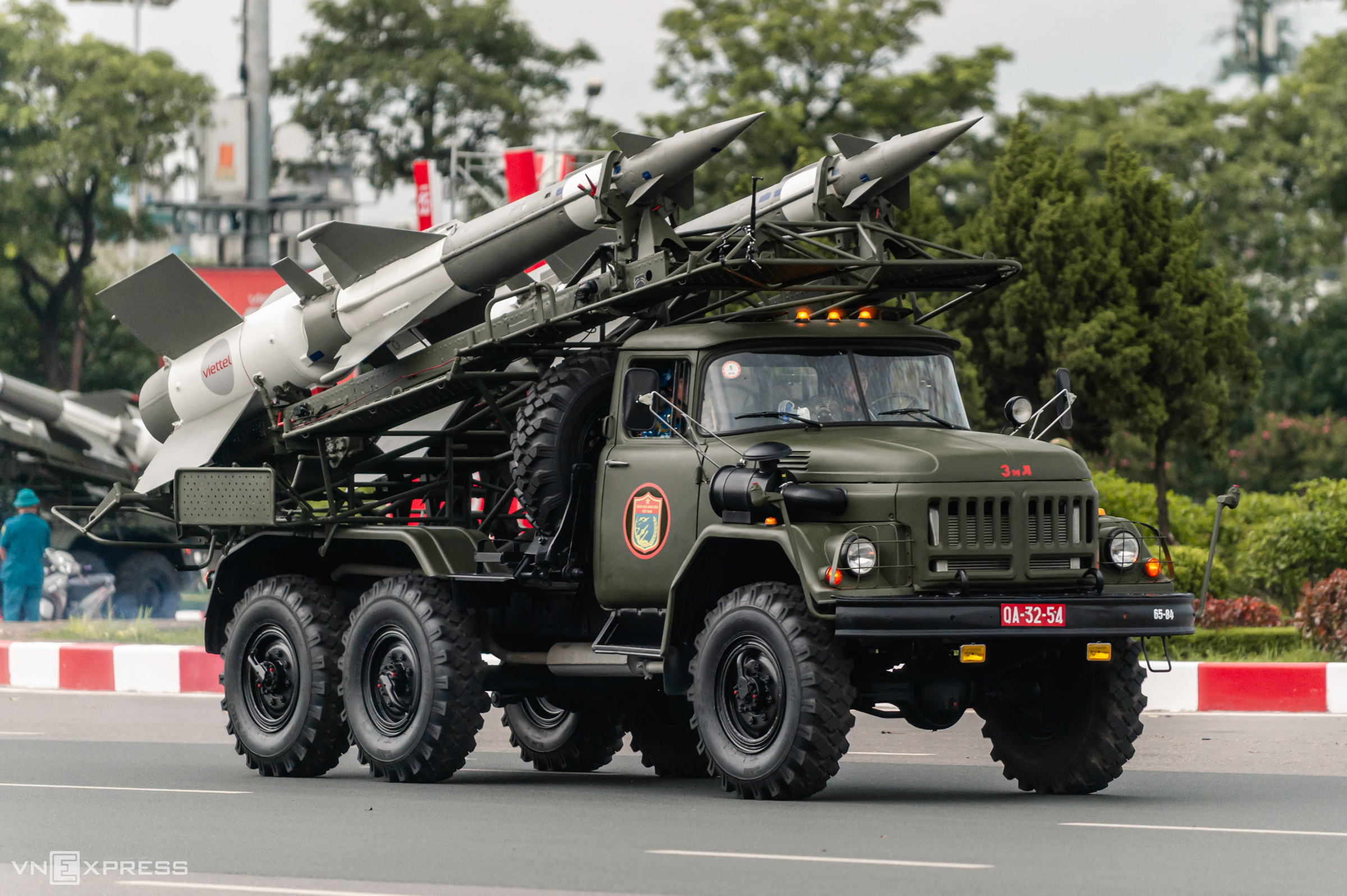 |
ZIL-131 carrying S-125VT missiles
The ZIL-131, the military version of the ZIL-130, is a versatile 3.5-ton 6x6 military truck designed in the Soviet Union and produced from 1964 to 2012. It utilizes a 6.9-liter V8 engine, has a payload of 5 tons and can tow over 5 tons on paved roads, or 3.5 tons with a 4-ton trailer off-road. It has a top speed of 80 km/h. The ZIL-131 shares many features with the Ural-375D carrying the BM-21 Grad multiple rocket launcher and is considered a legendary military truck in Vietnam.
Carried on the back is the "Magic Crossbow" S-125VT missile system, a Viettel-produced upgrade of the Soviet-made S-125. The S-125VT carries a 70 kg warhead containing 33 kg of explosives. It has a minimum range of 3.5 km and a maximum range of 30 km at a speed of 800 m/s, boasting a 90% target kill probability. Upgrades allow deployment and retrieval in 20 minutes, 70 minutes faster than the standard version.
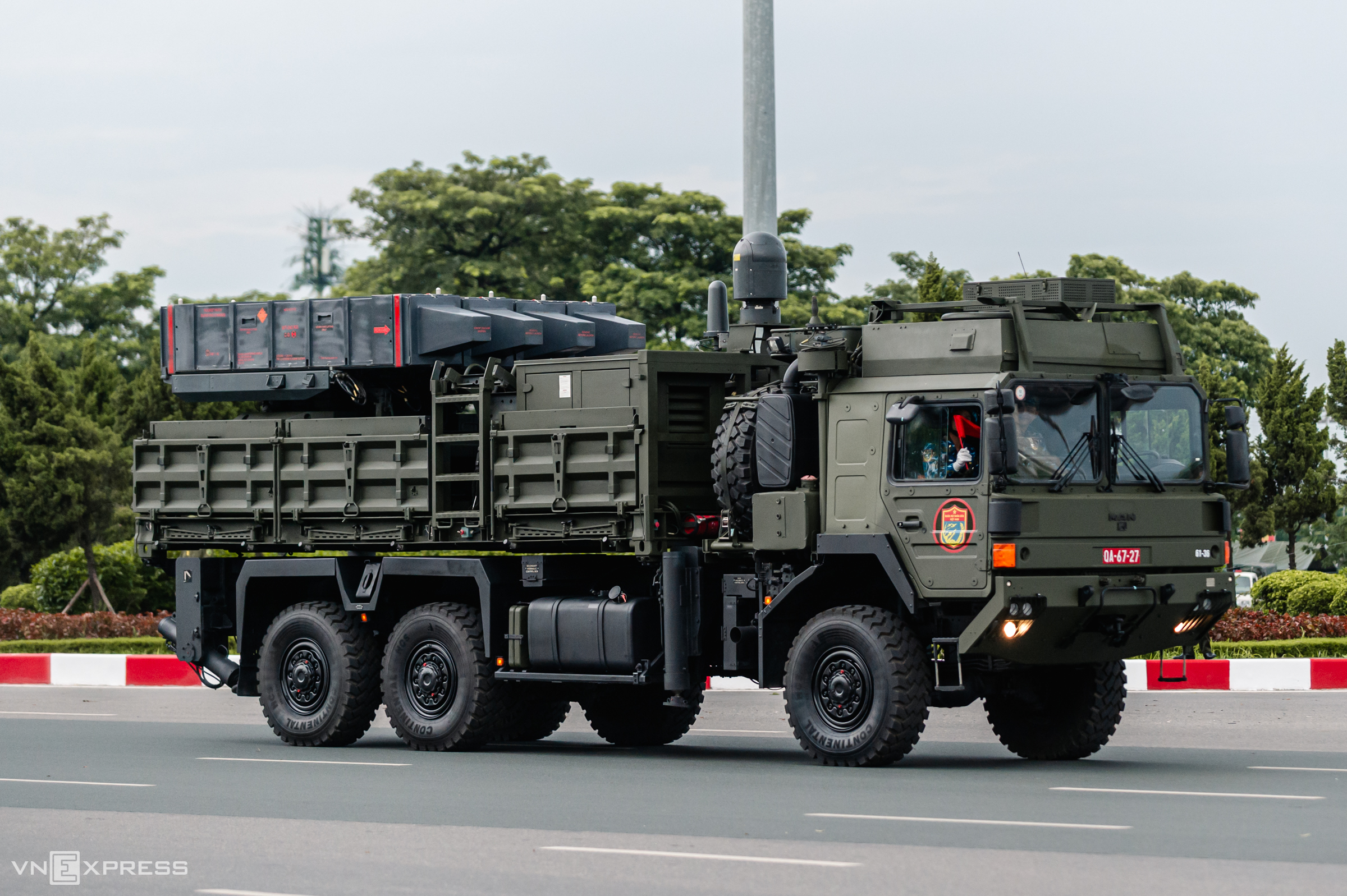 |
SPYDER missile system
The SPYDER missile system was developed by Rafael Advanced Defense Systems of Israel to destroy aerial targets. SPYDER uses two types of missiles: Python-5 and Derby. The Python-5 is infrared-guided, effective at short ranges up to 40 km, while the Derby uses active radar homing, effective at medium ranges up to 80 km.
The system includes the HX truck developed by MAN since 2002, but production is handled by the parent company RMMV (Rheinmetall Man Military Vehicles). RMMV is the result of a 2010 merger between the military truck division of MAN (49% stake) and the wheeled military vehicle division of Rheinmetall (51% stake). The parade on 2/9 featured two HX trucks: the HX58 with a 6x6 chassis serving as a command vehicle and the HX77 with an 8x8 chassis as the missile carrier.
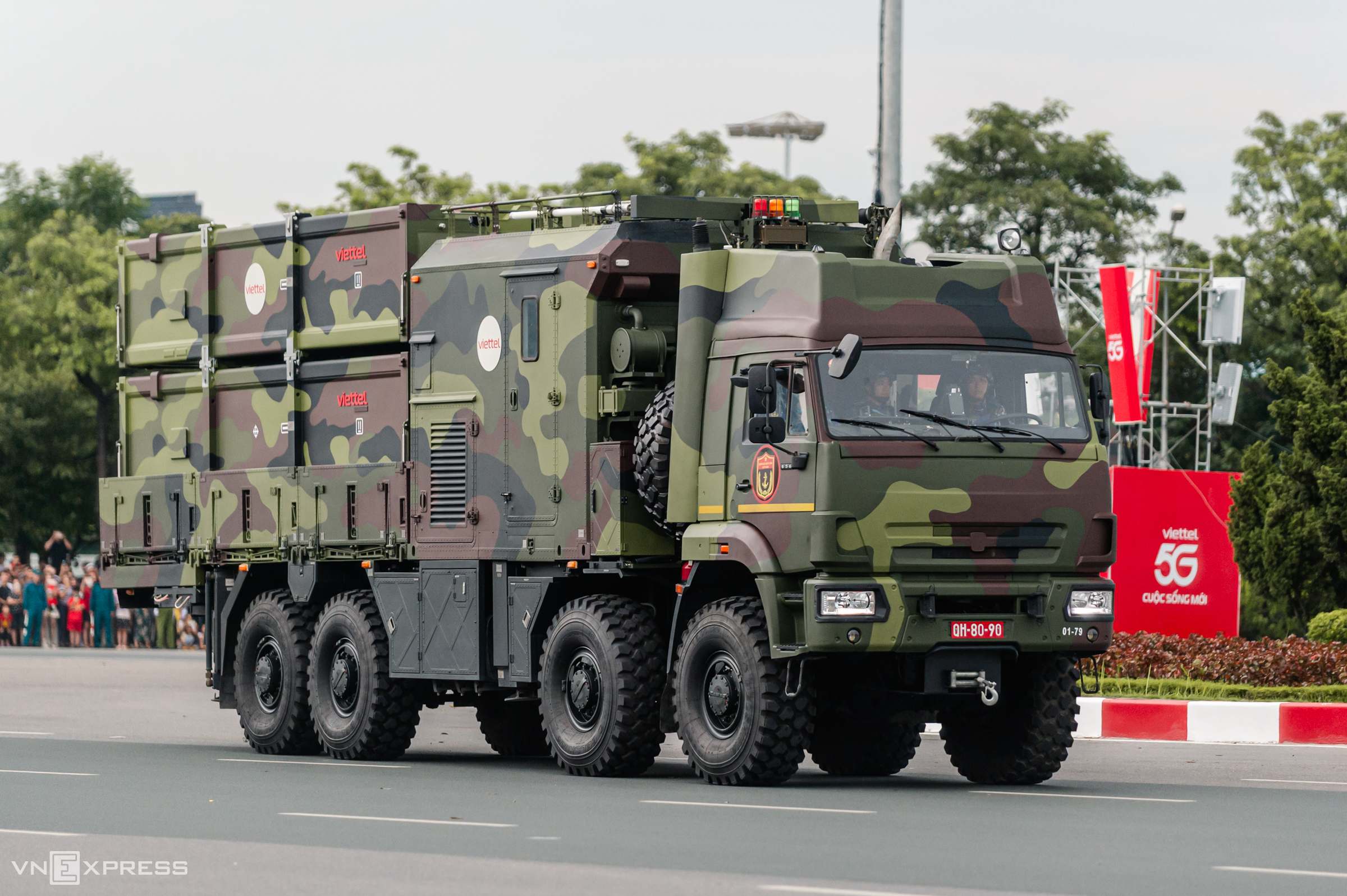 |
KamAZ 6560
The KamAZ-6560, carrying missiles as part of the Truong Son missile system, is a core component of coastal defense. First introduced at the 2005 Moscow International Automobile Salon, the truck's components are designed to meet the most stringent requirements for an off-road vehicle. The KamAZ-6560 is equipped with stabilizers for maximum cornering stability. It features a reinforced chassis designed for high durability and load-bearing capacity in all conditions. The cabin has three seats and a bed, equipped with a heating system and multi-layered thermal and sound insulation.
It's powered by an 11.76-liter, V8, turbocharged KamAZ-740.50-400 diesel engine producing 400 horsepower with liquid cooling. It features a 16-speed automatic transmission, has a top speed of 90 km/h, a 700-liter fuel tank providing a range of 1,200 km, and a fuel consumption of 57 liters/100 km at 60 km/h.
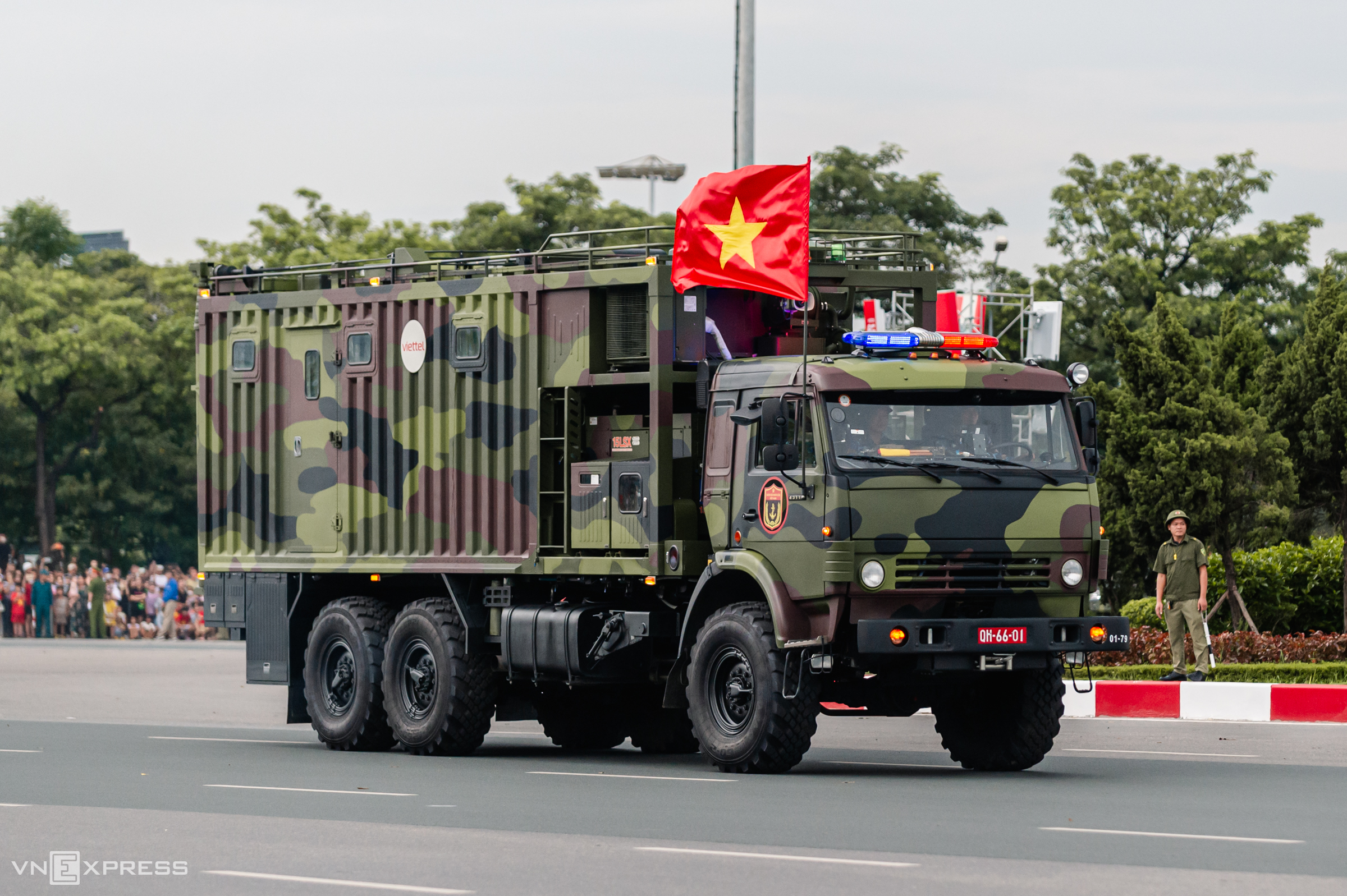 |
Truong Son missile system command vehicle
This is also a KamAZ truck, equipped with a 10.85-liter V8 engine producing 260 horsepower and a 9-speed manual transmission. It has a payload capacity of up to 11.4 tons and a top speed of 90 km/h.
The vehicle has two fuel tanks with capacities of 210 and 350 liters, providing an operational range of 1,100 km and a fuel consumption of 26 liters/100 km at 60 km/h. Within the Truong Son missile system, developed by Viettel Group, this serves as the command vehicle.
Minh Quan




